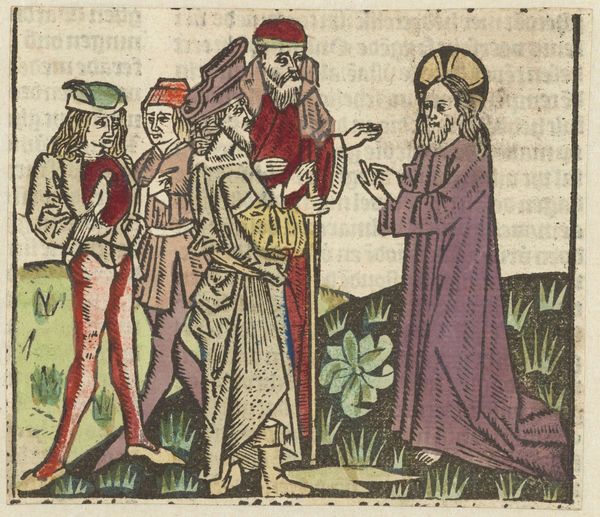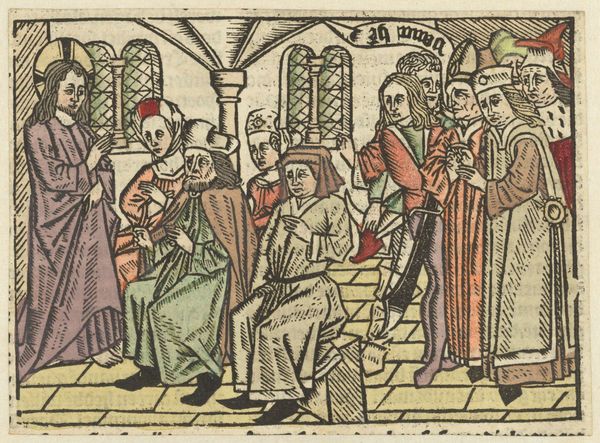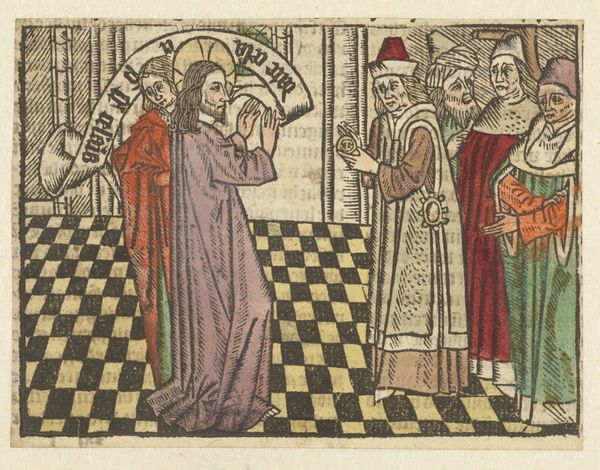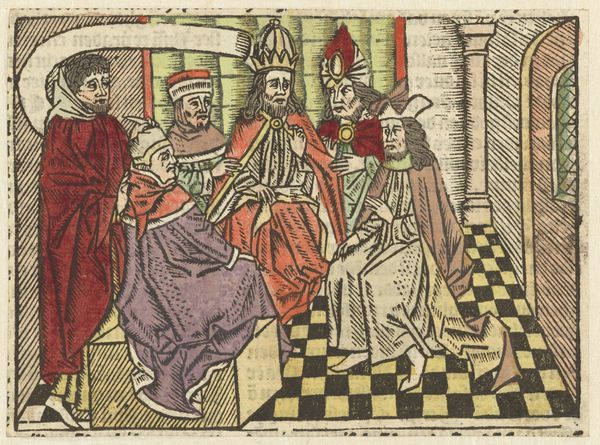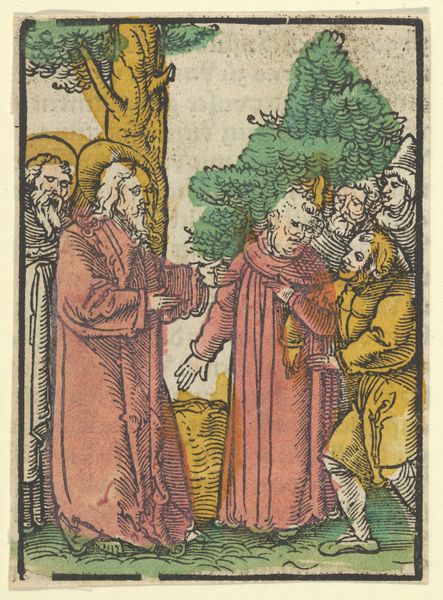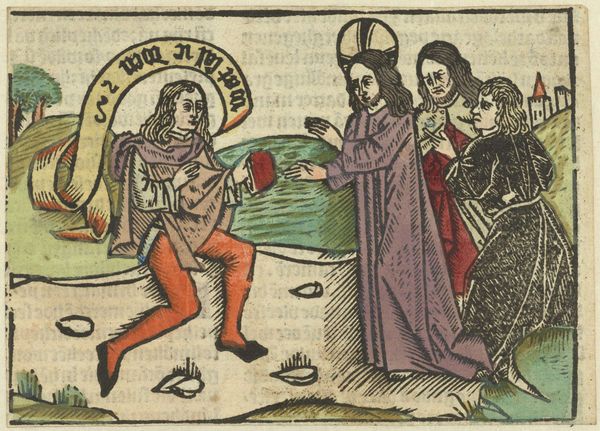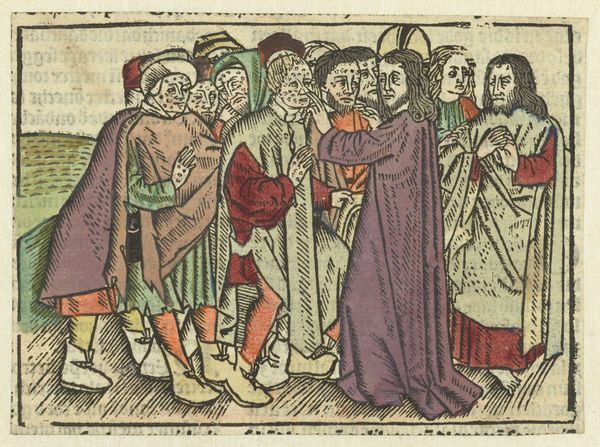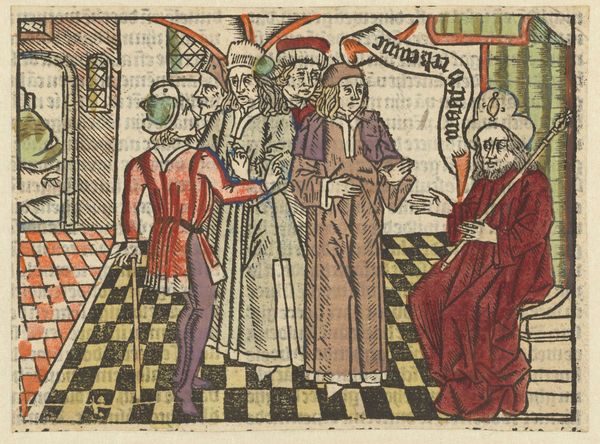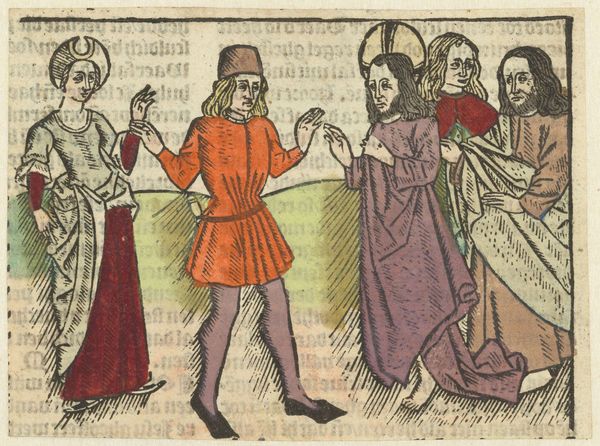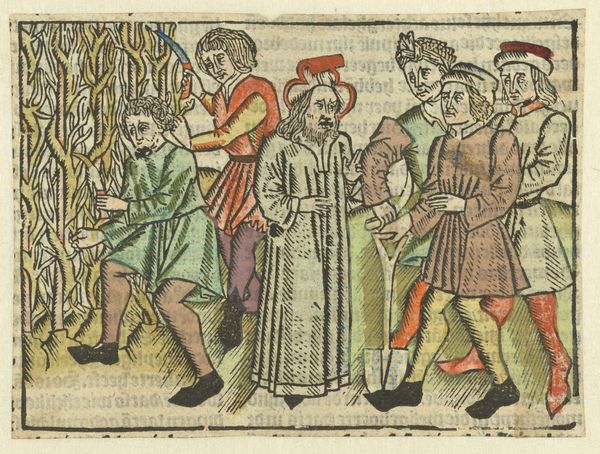
print, woodcut
#
narrative-art
# print
#
figuration
#
woodcut
#
history-painting
#
northern-renaissance
Dimensions: height 95 mm, width 130 mm
Copyright: Rijks Museum: Open Domain
Editor: This woodcut print, titled 'A Samaritan Refuses to Receive Christ,' made by Meester van Antwerpen sometime between 1485 and 1491, depicts two distinct groups with Christ seemingly caught between them. It's incredibly textural, with those bold lines really defining the shapes, and it uses only a handful of colours. What strikes me is the opposition between these forms; could you say more about the composition here? Curator: Certainly. Focusing purely on the visual language, consider how the composition is bisected, foreground to background. Note how the figures cluster into opposing groups with dynamic colour distribution. The figures themselves serve as contrasting elements with drapery acting almost architectonic; rigid folds versus curvilinear shapes which indicate depth, directionality, and potential narratives. Observe, also, how the linear marks carve space; what sort of feeling emerges, considering this dynamic? Editor: The consistent parallel hatching feels like a kind of stage. Everything is very flat, not a realistic kind of depth at all. It feels intentional, though – the story takes place *on* the picture plane. Does the limited palette mean that colour isn’t particularly significant? Curator: No, indeed. While the range is restrained, the application is strategic. Note, for instance, how brighter colour is concentrated among the central group and consider the effects of the artist's choice regarding analogous colour schemes throughout, contributing further to internal coherence via repeating or reflecting elements to build continuity within pictorial architecture, what then, shall be said about pictorial language used to divide characters? Editor: So the artist uses this kind of structural color-coding to define "good" and "bad"? Fascinating. I never would have seen that at first glance. Curator: Precisely, we decode relationships through rigorous consideration of how form represents substance, what kind then can a form contribute or reveal? What begins in close attention will unlock the potential that lays within its surface and how pictorial relations create significance on all that's perceived. Editor: Thank you. That close attention to the materials and their arrangements gives a completely different reading of the piece.
Comments
No comments
Be the first to comment and join the conversation on the ultimate creative platform.

